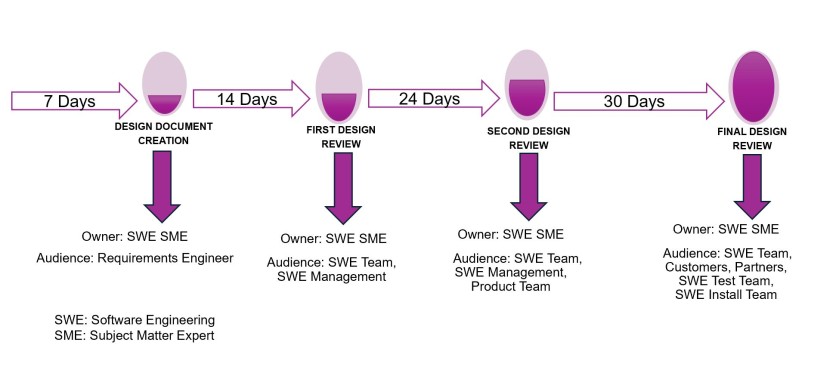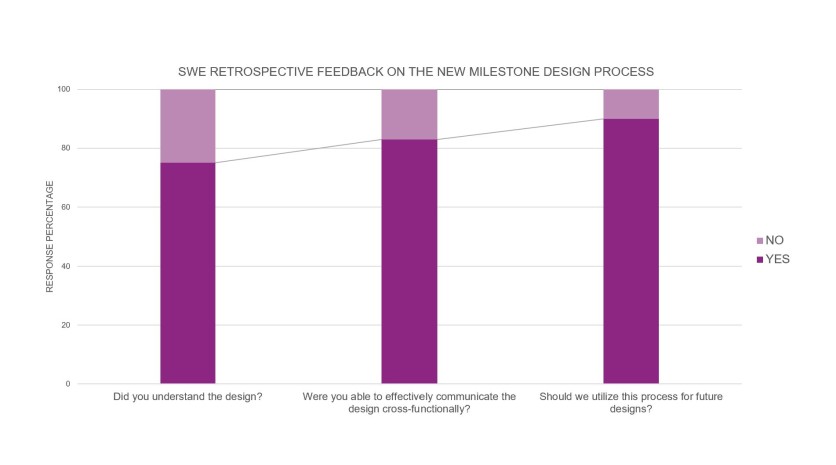As project management has evolved from rigid, linear models to flexible, technology-driven methodologies, the tools supporting these frameworks have become increasingly diverse and powerful. Over the course of my 15-year career in program and project management (PM), I have witnessed and participated in the evolution of best practices and industry tools by learning, testing, and applying various techniques. While results often varied, many proved successful and delivered positive outcomes. Based on these experiences, I have determined that whether you are employing Scrum or Agile processes, project management tools such as Asana, Jira, or Azure DevOps (to name a few), or Customer Relationship Management (CRM) tools like Salesforce or IBM Business Process Manager, the success of a project depends upon utilizing the right PM tool for the project, and understanding its administrative capabilities so that the tool can be tailored to the needs of your project team.
An effective PM tool can streamline workflows, enhance collaboration, and ensure the timely delivery of projects and programs. With numerous options available, making the best choice can be challenging. My approach has been to develop significant expertise in a broad range of tools, which allows me to match the right technology to a project based on its scope, deliverables, participants, timeline, and budget. The following guidance is intended to assist project managers in selecting the right tool for their initiative and organization.
Features of Project Management Tools
To choose the best project management tool, it is essential to understand the key efficiency and productivity features that will impact an organization. Some of the most important features to consider include:
- Task Management: The tool should allow for creating, assigning, and prioritizing tasks with hours tracked, due dates, and potential dependencies as needed.
- Integration Capabilities: Integration with communication platforms such as Slack or Microsoft Teams, file sharing platforms like Dropbox or OneDrive, and scheduling platforms like Outlook and Google Calendars are indispensable.
- Reporting and Analytics: Comprehensive reporting and analytics capabilities allow for monitoring project performance, tracking metrics, and making data-driven decisions.
- Customization: The ability to customize workflows, templates, and dashboards ensures that the tool can be tailored to the specific needs of the project team.
Choosing the right project management tool, based on a prioritization of these features, can significantly improve the initiation phase of a project. This is especially true during the design stage, where clear structure, communication, and alignment are critical to setting the foundation for successful execution.
The Problem: Interpreting Customer Requirements
After the customer-facing teams have provided instructions and the requirements from the customer have been handed off to the software engineering (SWE) project team—usually through the requirements engineer—the project team must translate these needs into concise steps. This stage typically involves diagrams and visual aids that the SWE team can use in building the product, as well as in predicting cross-functional steps that should be taken after the build/development stage is completed. The output of this effort is the design document for the project.
In my experience in software engineering, I have found that project teams often struggle with compiling the design document and sharing its contents among all interested stakeholders, because an effective process has not been outlined and tracked by milestones in a project management tool before attempting to develop the design document.
When project teams jump into creating a design document without a clear process, the design is ineffective. This will then plague the project at all levels of development and compromise the output of the project (usually a SW product, technology, or enhancement). The defective results that ensue from a chaotic process lead to project teams that are unable to successfully complete the project on time—or at all—and introduce additional scope creep that causes frustrated customers and/or partners at the receiving end. This can, in turn, have a negative impact on revenue generation, as well as the reputation of an organization that is otherwise considered innovative and progressive.
The Solution: Defining Timeline and Milestones in a PM Tool
The best approach to addressing design issues is to dedicate considerable time and resources to developing a design timeline with project milestones and tracking them in a project management tool. While taking time out of the project schedule to create the PM timeline may at first seem counter-productive, in fact, it will boost productivity by eliminating the delays and downtime that typically happen when plans are ill-defined. With my teams, I implemented a timeline that can be completed in 30 days for most SWE projects with a duration of nine months or less. Timeline progress and milestones can be monitored with project management tools as part of the Software Development Life Cycle (SDLC), so that all stakeholders with visibility into the PM tool are kept apprised of its status. When building a project timeline, I advise project managers to factor in the following four milestones that must be completed in the 30-day period:
- Create the Design Document (Milestone: 7 days): Completion requires a documented design in an editable Word doc, and a work item in the project management tool with completed hours recorded. The Owner receives completed requirements from the requirements engineer and works closely with that individual on the content, format, language, graphics, etc., of the document.
- First Design Review (Milestone: 14 days): Completion requires a scheduled meeting by the Owner with track changes enabled on the document, and a work item for the design review created in the project management tool, tracking meeting hours and high-level corrections from the SWE team. After the meeting, corrections and updates are added by the Owner to the editable document. The work item is closed with completed hours once the editable document is ready for a second review.
- Second Design Review (Milestone: 24 days): Completion requires another scheduled meeting by the Owner. Corrections from the first review are implemented, and a work item for the second design review is created, tracking hours for the second meeting session and the subsequent corrections that will follow. The work item is closed when the final review is scheduled, and the updated editable design document is set to "reviewing" and sent out to the aggregate audience of the final review for comments.
- Final Design Review (Milestone: 30 days): Completion requires an in-depth meeting with the audience using a reviewed version of the design document, with comments included from all audience members. This review also doubles as a working session for the owner to incorporate final changes in real time with the audience present. At the end, the design is approved by the audience, and the Owner finalizes the design document into a non-editable PDF. The work item is then closed, with completed hours included. Minutes from the review and/or a recording of the review and the finalized design document are attached to the work item for future reference throughout the life cycle of the project.

The Results: Building a Timeline, Expedited Time-to-Market
My first opportunity to utilize this milestone process for a design document was during a cross-functional project with my SWE project team, as the Owners of an enhancement that connected and improved the speed of processing data between an internal database and a partner's pharmaceutical device at a major retail pharmacy customer. The enhancement needed to be designed, built, tested, and installed on our partner's device within six months, despite the typical requirement of 10–12 months for these steps.
Prior to initiating the project, I had discussions with my SWE team and the project Owner(s) to understand their concerns around the design, and subsequently created the milestone design solution. Immediate results were realized when the design document was created seven days after the finalized requirements. This represented a significant process improvement, since in the past, creating the design document alone typically spanned 30–60 days. This was most often due to the SWE team making their best guess on what partner and customer requirements were based on their previous expertise in creating the enhancement for other customers. Furthermore, the team usually worked in silos, without engaging other SWE team members or cross-functional team members, which perpetuated a knowledge and process deficiency.
Armed with the first version of the design document, it was much easier for the SWE team to champion the enhancement and provide a document for stakeholders to digest and familiarize themselves with early on in the project. Later, the finalized design document was continuously referenced throughout the SDLC of the project as a strong resource for further documentation for various stakeholders.
Because the engagement within the SWE team and across other teams was very high, we were able to meet the six-month deadline to market a week early successfully. The project Owners were confident in their design, and the morale of the SWE team was at an all-time high. Upon completion of the project, during the retrospective review, everyone unanimously agreed that we should follow this process improvement for future projects. We have continued to see success at the design level for subsequent projects.

Recommendations for Project Teams
Choosing the best project management tool for an organization requires careful consideration of the specific team's needs and workflows. In my experience, that can be dictated by committing to a design process that requires utilizing the tool to document and track progress on the milestones throughout the process against a timeline.
Tools like Trello, Jira, and Azure DevOps are great for Engineering teams and Software Development teams because the transition from design work items and milestones to development work is seamless, due to the tools' vast integration abilities that can link directly to GitHub, Bitbucket, and Node.js. Codebases are structured so that work can be tested and installed upon completion with support from cross-functional teams. There are also integration capabilities with tools such as Salesforce that allow non-SWE cross-functional teams to pull completed data from design and development, to track budget versus expense information, and create graphics showing trends and metrics of progress, as well as utilize professional templates with roadmaps and customer-facing support documentation for sales, troubleshooting, and maintenance needs.
Different project management tools each offer unique advantages and capabilities that can enhance productivity and collaboration within an organization during project design phases. Choosing which tool delivers the optimal results depends on evaluating key features, understanding the specific needs of project teams, and considering popular options and their value propositions. Even within the same organization, one PM tool may not fit every project's parameters. By carefully assessing these tools and aligning them with the team's tasks and goals at each stage of the project, project Owners can ensure successful project management and timely delivery of projects and programs.

Gloria Are brings 15 years of experience to her current role as Technical Project Manager for a technology-powered pharmacy fulfilment company that provides an integrated platform of advanced robotics and enterprise software solutions to the pharmacy industry. As a technical expert and team leader, she applies significant collaborative leadership, problem-solving, and operations management and process improvement skills to supervising diverse professional teams. Ms. Are excels in a wide array of project management, CRM, and business process tools. She believes that building strong business relationships with internal and external cross-functional teams drives successful project outcomes. Ms. Are received a Bachelor of Arts degree in International/Global Studies and a Master of Arts in Political Science and Policy Analysis from Indiana University. She additionally holds Certifications as a Project Management Professional (PMP) and in Project Management, Scrum Fundamentals, Public Management, Non-Profit Management, and Mediation and Conflict Resolution.
The views and opinions expressed in this article are solely those of the author and do not reflect those of the author's current or former employer, clients, or affiliated organizations. This content is for informational purposes only; the author disclaims responsibility for outcomes and does not endorse any referenced technologies.
ⓒ 2026 TECHTIMES.com All rights reserved. Do not reproduce without permission.




